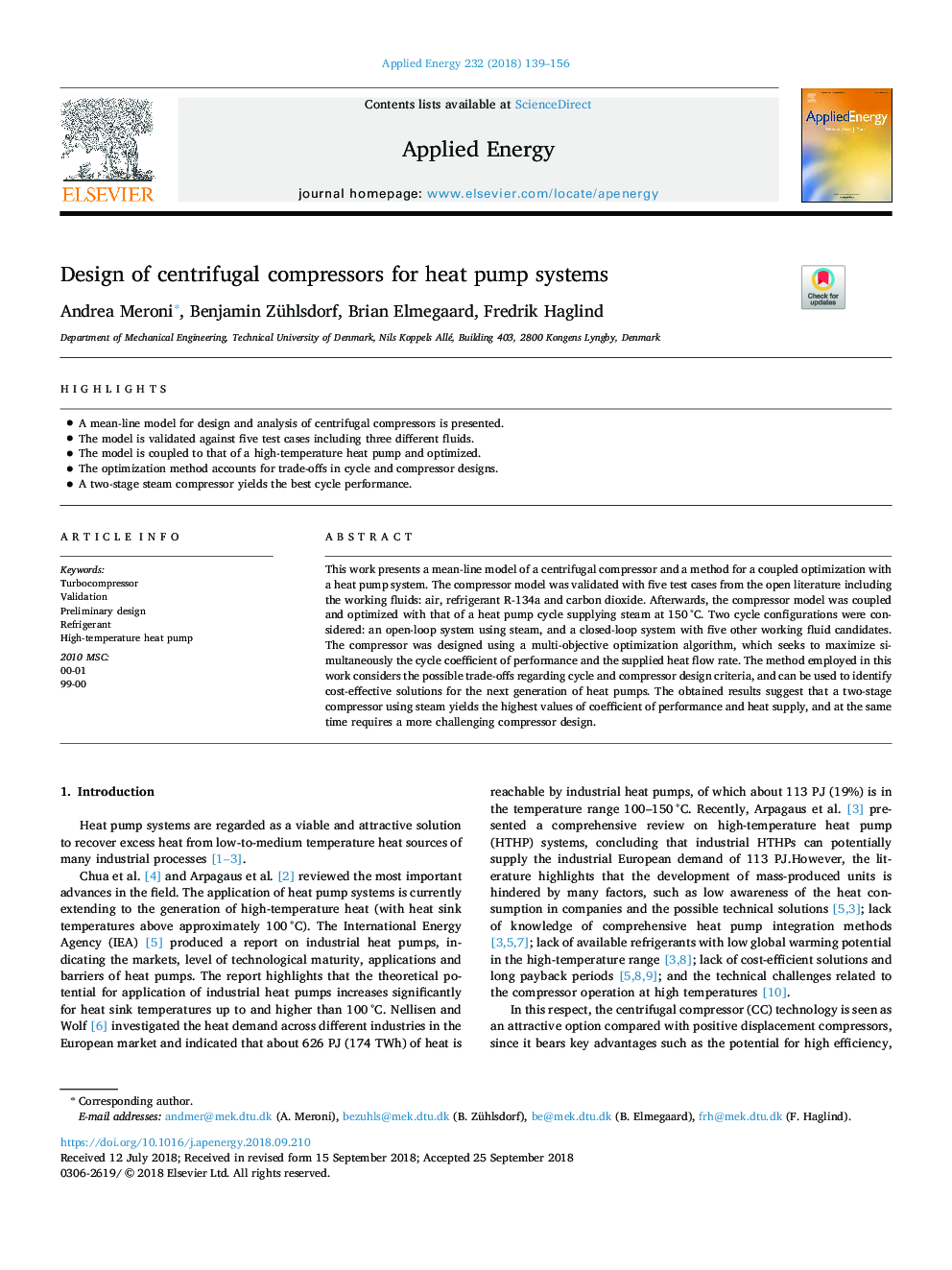| Article ID | Journal | Published Year | Pages | File Type |
|---|---|---|---|---|
| 11017545 | Applied Energy | 2018 | 18 Pages |
Abstract
This work presents a mean-line model of a centrifugal compressor and a method for a coupled optimization with a heat pump system. The compressor model was validated with five test cases from the open literature including the working fluids: air, refrigerant R-134a and carbon dioxide. Afterwards, the compressor model was coupled and optimized with that of a heat pump cycle supplying steam at 150â¯Â°C. Two cycle configurations were considered: an open-loop system using steam, and a closed-loop system with five other working fluid candidates. The compressor was designed using a multi-objective optimization algorithm, which seeks to maximize simultaneously the cycle coefficient of performance and the supplied heat flow rate. The method employed in this work considers the possible trade-offs regarding cycle and compressor design criteria, and can be used to identify cost-effective solutions for the next generation of heat pumps. The obtained results suggest that a two-stage compressor using steam yields the highest values of coefficient of performance and heat supply, and at the same time requires a more challenging compressor design.
Related Topics
Physical Sciences and Engineering
Energy
Energy Engineering and Power Technology
Authors
Andrea Meroni, Benjamin Zühlsdorf, Brian Elmegaard, Fredrik Haglind,
